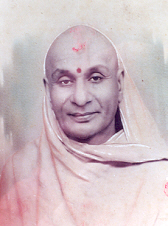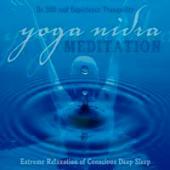|
|
Shankaracharya of
Karvirpitham - Dr. Kurkoti
Notes by Swami Jnaneshvara (bio)

What I am writing here
is not intended to be controversial, though I acknowledge it probably
will be to some people.
Much of the
biographical information of Swami Rama describes that Swami Rama was
initiated as Shankaracharya of Karvirpitham around 1950 and that he was
successor to the current Shankaracharya at the time, who was also known
as Dr. Kurtkoti. This was said to be in Nashik, India, and was
supposedly a fifth Shankaracharya mutt (monastery) not listed with the
four most known mutts.
During the late 1990s I
traveled to the area of Nashik and was looking for the mutt of
Karvirpitham. What I found was the home of Dr. Kurtkoti and about 5-6
families who had been his students. Most significant of these was a man
in his 80s who was Dr. Kurtkoti's lawyer of many years, a Mr. Dixit.
It was explained to me
by these various families that during the early 1930s Shankaracharya
Kurtkoti was traveling away from the mutt, and that when he returned he
had been replaced by a new man. The raj (the Indian man in charge of the
region) and the British government officials had not approved of
Kurtkoti's most progressive actions, which included bringing an end to
the practice of young women being brought to the monks for sex, women
being permitted in temples, and arranging marriages between Indians and
foreigners. I cannot, and do not wish to prove or disprove these points,
but am only sharing what I was told by the followers of Dr. Kurtkoti.
Swami Rama was not
known to any of the people I met, other than the lawyer, who remembered
him as Bhole Baba and Yogeshvar. Dixit explained to me that Bhole Baba
was "the most beautiful human being I have ever met", that he was
initiated by Kurtkoti as a dandi swami around 1950, and was given the
name Dandi Swami Sadashiva Bharati. He explained Bhole Baba's incredible
mind, and said that at the time of the dandi swami diksha, he recalled
from memory the names and addresses of some 2,000 people to be invited
guests, while a clerk transcribed in writing. Mr. Dixit, while aged when
we spoke, seemed very clear of mind and explained that there was no
history of Sadashiva Bharati having been initiated as shankaracharya.
Kurtoti was actively fighting in court for the reversal of his being
replaced as shankaracharya, spending most of his personal family fortune
on legal expenses up to the time of his leaving the body in 1967, but at
the time, he was officially not shankaracharya and therefore not
authorized to pass on this position. I have found it fascinating,
however, to be told years later that the prerequisite to be installed as
a shankaracharya is to first receive diksha (initiation) as dandi swami.
He said he had not seen or heard from Sadashiva Bharati since he left
Nashik without notice in the early 1950s. The lawyer, Dixit explained
that much of Sadashiva's time was spent in Bombay where Kurtkoti and he
wanted to set up teaching centers, which never fully came into being.
I was told that
Shankaracharya Dr. Kurtkoti left the body in 1967, and that after many
years of negotiations surrounding his estate, that was finally settled
shortly before my visit. I visited and stood at the samadhi shrine where
his physical remains are entombed. There is a childrens' school within
about a hundred meters, which continues in his name, and I spoke with
the teacher, who was aware of the stories about the shankaracharya and
his life. There is also a two-story building there, which was not being
used at the time. Supposedly, trustees were exploring uses of the
building.
I was only in Nashik
for a few days, and did not have time to explore further, and did not
formally meet with the trustees, which would be a next logical step for
one trying to follow through on this. The samadhi shrine of Dr. Kurtkoti
is several kilometers outside of Nashik and should be easy to find by
anybody wanting to search this further. From there, one could likely
find people with more information. It is also important to note that
there is a Kurtkoti library open to the public, and this is in Nashik.
I have no explanation
for the inconsistencies about Swami Rama and the position of
Shankarachara of Karvirpitham. However, over many years when I read the
bios of Swami Rama sitting in this regal position for several years, and
then leaving because he got tired of the streams of people coming daily
to touch his feet, it never made sense to me that it would have taken
Swami Rama so long to figure this out. Afterall, I am a virtual nobody,
and it is obvious to me that this is no way for a sincere aspirant, let
alone an adept, to live. What seemed very likely, however, was his
connection with Kurtkoti. As I heard from people about him, I became
more and more impressed; this was a man of tremendous values, who was
far beyond his times. That the Swami Rama I know would want to spend
time with him, to work with him on serving humanity, made perfect sense,
regardless of any official title. Clearly, in the spirit of service,
Swami Rama acted as successor to Shankaracharya Dr. Kurtkoti, regardless
of official status of either of these two great men.
I showed Mr. Dixit a
copy of a newsletter from the Himalayan Institute Hospital Trust in
Dehradun, which was created by Swami Rama. I told him about the hospital
campus, and what I knew of the plans for it to be a full status
university. I told him about the many countries where Swami Rama had
personally taught may thousands of people, and had influenced millions.
As we both sat there together, each with a tear or two in our eyes, I
told Mr. Dixit that I think Swami Rama carried on with the work that
Kurtkoti was wanting to do; he agreed.
I personally took the
above photograph of Shankarachara Dr. Kurtkoti from a picture that was
hanging in the school near the samadhi shrine.


This site is devoted to
presenting the ancient Self-Realization path of
the Tradition of the Himalayan masters
in simple, understandable and beneficial ways, while not compromising
quality or depth. The goal of our sadhana or practices is the highest
Joy that comes from the Realization in direct experience of the
center of consciousness, the Self, the Atman or Purusha, which is
one and the same with the Absolute Reality.
This Self-Realization comes through Yoga meditation of the Yoga
Sutras, the contemplative insight of Advaita Vedanta, and the
intense devotion of Samaya Sri Vidya Tantra, the three of which
complement one another like fingers on a hand.
We employ the classical approaches of Raja, Jnana, Karma, and Bhakti
Yoga, as well as Hatha, Kriya, Kundalini, Laya, Mantra, Nada, Siddha,
and Tantra Yoga. Meditation, contemplation, mantra and prayer
finally converge into a unified force directed towards the final
stage, piercing the pearl of wisdom called bindu, leading to the
Absolute.
|
|